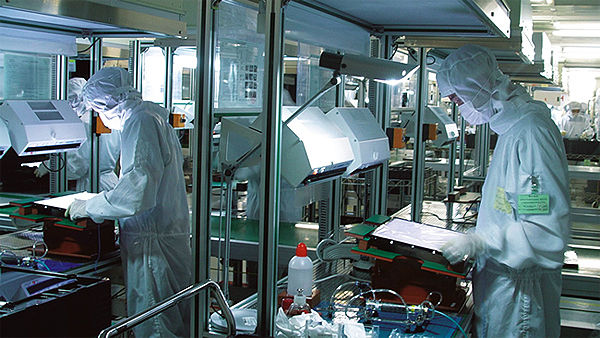Work automation is a double-edged sword. It saves manufacturers a lot of time, money and energy, but threatens the labor market with certain groups of the workforce. The production chain Foxconn will now replace ten thousand human jobs with robotic units. Will machines take over part of the work for us in the future?
Machines instead of people
Innolux, part of the Foxconn Technology Group, is where the massive robotization and automation of production is set to take place. Innolux is one of the increasingly important manufacturers of not only LCD panels, its customers include a number of important electronics manufacturers such as HP, Dell, Samsung Electronics, LG, Panasonic, Hitachi or Sharp. The vast majority of Innolux factories are located in Taiwan and employ tens of thousands of people, but some of them are to be replaced by robots in the foreseeable future.
"We plan to reduce our workforce to less than 50 employees by the end of this year," Innolux Chairman Tuan Hsing-Chien said, adding that at the end of last year, Innolux employed 60 workers. If all goes according to plan, 75% of Innolux's production should be automated, according to Tuan. Tuan's announcement comes just days after Foxconn Chairman Terry Gou announced plans to invest $342 million to incorporate artificial intelligence into the manufacturing process.
A bright future?
At Innolux, not only the optimization and improvement of production, but also the development of technologies is moving forward. The company's executive vice president Ting Chin-lung recently announced that Innolux is working on a brand new type of display with the working name "AM mini LED". It should offer users all the advantages of OLED displays, including better contrast and flexibility. Flexibility is a much-discussed element in the future of displays, and the success of smartphone or tablet concepts with a "folding" display suggests that there might not be a shortage of demand.
Grand plans
Automation at Foxconn (and therefore Innolux) is not a product of recent ideas. In August 2011, Terry Gou let it be known that he wanted to have a million robots in his factories within three years. According to him, robots were supposed to replace human power in simple manual work on production lines. Although Foxconn did not manage to achieve this number within the set deadline, automation continues at a brisk pace.
In 2016, news began to spread that one of Foxconn's factories had reduced its workforce from 110 to 50 workers in favor of robots. In its press statement at the time, Foxconn confirmed that "a number of manufacturing processes have been automated," but declined to confirm that the automation came at the cost of long-term job losses.
"We apply robotic engineering and other innovative production technologies, replacing repetitive tasks previously performed by our employees. Through training, we enable our workers to focus on elements with higher added value in the production process, such as research, development or quality control. We continue to plan to employ both automation and human labor in our manufacturing operations,” the 2016 statement said.
In the interest of the market
One of the main reasons for automation at Foxconn and in the technology industry in general is the large and rapid increase in competition in the market. Innolux has become a successful supplier of LCD panels for televisions, monitors and smartphones of a number of important manufacturers, but it wants to move a step further. Therefore, he chose LED panels of a smaller format, the production of which he wants to fully automate, in order to compete with competitors producing OLED panels.
Source: with the BBC, TheNextWeb



